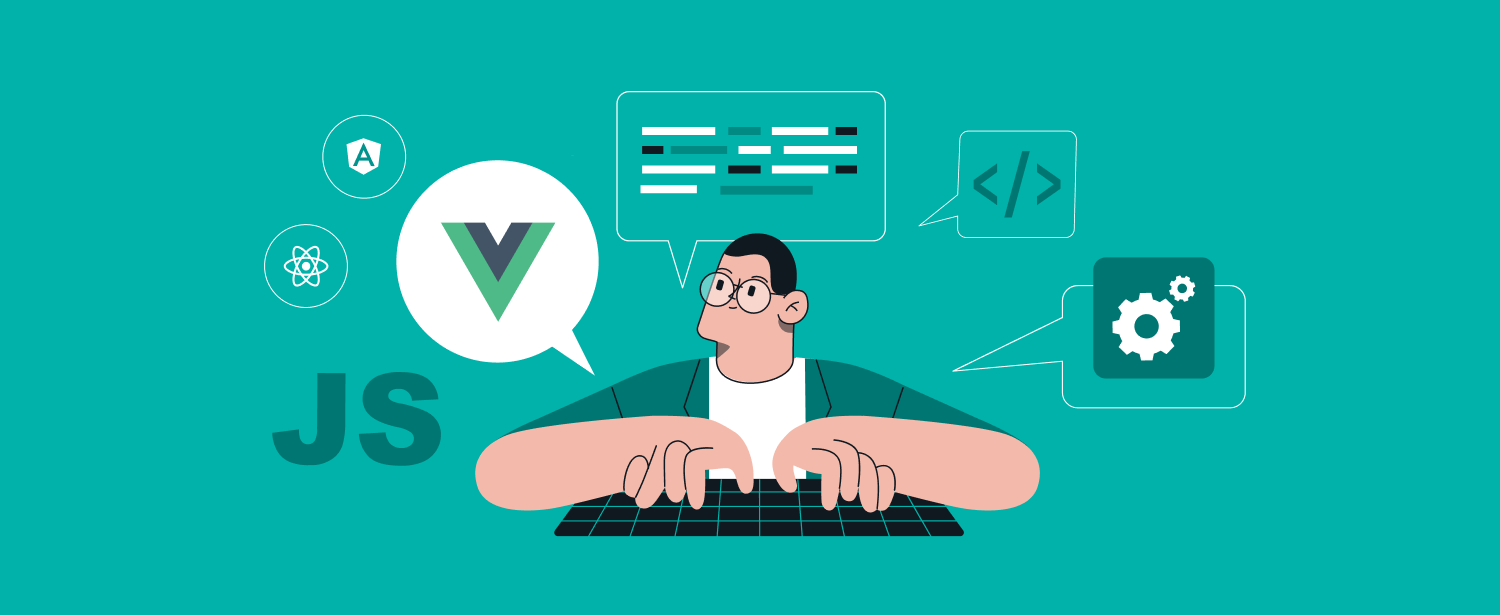The Curated News Hub
Your daily source for diverse news and insights.
Vue.js: The JavaScript Framework That Throws Shade at Others
Discover why Vue.js outshines its competitors and transforms web development. Dive into the framework that's taking the spotlight!
5 Reasons Why Vue.js Stands Out Among JavaScript Frameworks
When it comes to choosing a JavaScript framework, Vue.js has gained significant attention for its unique features and advantages. First and foremost, its progressive framework allows developers to adopt it incrementally. This means that you can integrate Vue.js into existing projects without needing to rewrite everything from scratch, making it a perfect choice for both large-scale applications and smaller components. Secondly, Vue's reactivity system is designed to enhance the user experience by updating the view as data changes, resulting in a smoother interaction for users. This reactivity, coupled with its focus on component-based architecture, enables developers to build applications in a more organized manner.
Another reason why Vue.js stands out among JavaScript frameworks is its comprehensive documentation, which is a boon for developers at all skill levels. Clear guidelines make it easier to learn and implement features, reducing the learning curve significantly. Moreover, the Vue ecosystem includes an array of tools and libraries that enhance functionality, such as Vue Router for routing and Vuex for state management. Lastly, the strong community support surrounding Vue.js ensures that developers can find solutions and receive assistance quickly, fostering an environment of collaboration and innovation that keeps the framework evolving.

How Vue.js Simplifies Development: A Deep Dive
Vue.js is a progressive JavaScript framework that revolutionizes the way developers create user interfaces. One of the most significant advantages of Vue.js is its component-based architecture, which allows developers to break down complex applications into smaller, manageable components. This modular approach not only enhances reusability but also streamlines the development process, making it easier to maintain and scale applications. Additionally, Vue's virtual DOM improves performance, as it efficiently updates the user interface by only rendering the parts of the DOM that actually change, saving both time and resources.
Another key feature that simplifies development with Vue.js is its reactivity system. This system automatically tracks the dependencies of data changes, meaning developers don’t have to manually manage the state of the application. With tools like Vue Router and Vuex, managing application state and navigation becomes seamless, allowing developers to focus more on building features rather than dealing with boilerplate code. Lastly, the extensive documentation and supportive community further empower developers to leverage Vue.js effectively, encouraging best practices and enhancing productivity in web application development.
Is Vue.js the Future of Frontend Development?
Vue.js has rapidly gained popularity among developers as a progressive framework for building user interfaces. Its core library focuses on the view layer, making it adaptable and easy to integrate with other projects and libraries. The flexibility of Vue.js allows developers to create single-page applications (SPAs) with ease, improving performance and user experience. Many businesses are now adopting Vue.js for their frontend development needs, which suggests a strong future for this framework in an ever-evolving digital landscape.
As we look toward the future of frontend development, several factors make Vue.js a strong contender. Not only does it boast an active community and a rich ecosystem of tools and libraries, but it also features a gentle learning curve for new developers. This accessibility, combined with the framework's robustness, positions Vue.js favorably against its competitors. In a world where performance and speed are paramount, Vue.js aims to deliver a seamless developer experience, indicating that it may indeed be a leading choice for the next generation of web applications.